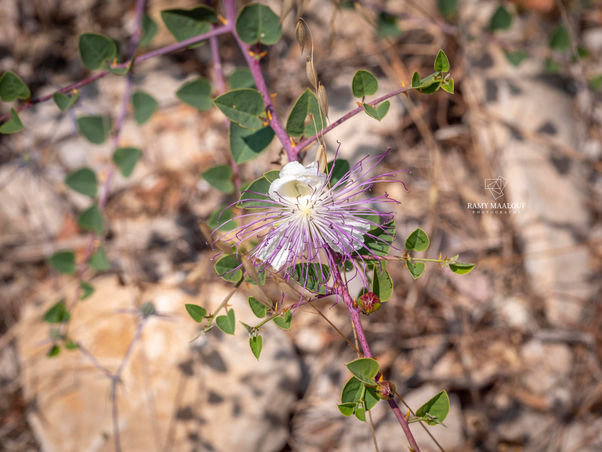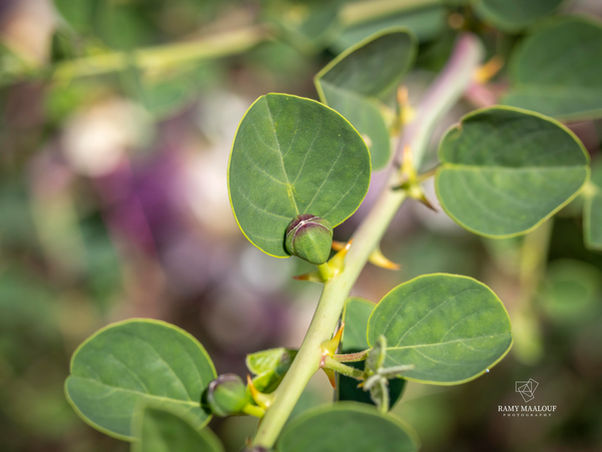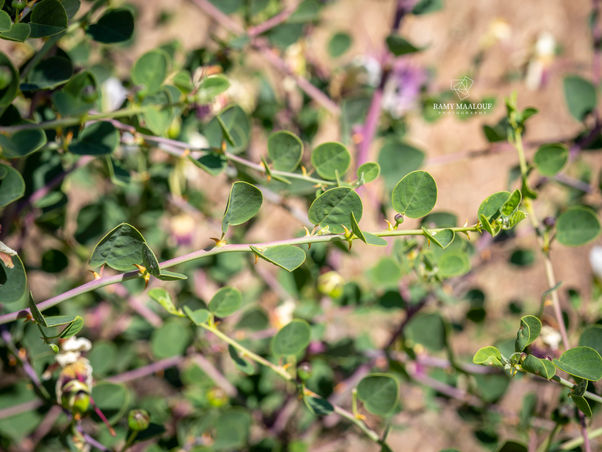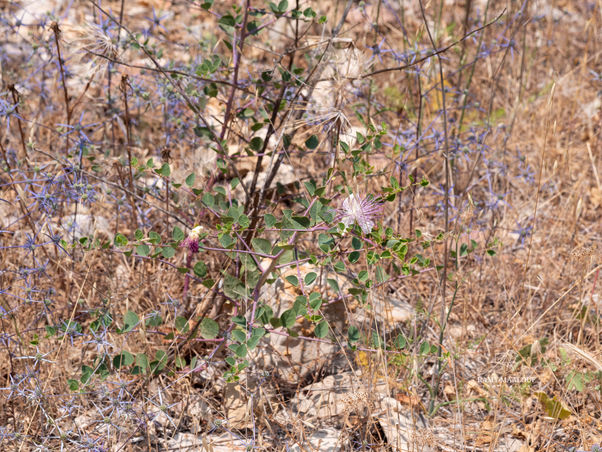Family |
Capparaceae
Capparis zoharyi
Inocencio, D.Rivera, Obón & Alcaraz
Capparis zoharyi Inocencio, D.Rivera, Obón & Alcaraz
(Ann. Missouri Bot. Gard. 93: 145, 2006)
• Life-form & habit: Erect, glabrous shrub up to 2 m tall; twigs straight, ± erect, green to reddish-purple, older ones bluish due to a waxy covering; internodes 1–5 cm.
• Leaves: Rounded to obcordate, rarely ovate, 2–4 × 2–4 cm, somewhat fleshy; base rounded or occasionally cordate; apex rounded or slightly obcordate, mucro absent or minute (0.1–0.5 mm). Petioles short (0.7–1 cm); stipules curved, retrorse, strongly decurrent, rose-type, orange, 0.3–0.6 × 0.3–0.4 cm.
• Inflorescence & flowers: Buds rounded, flowers slightly zygomorphic; pedicels thick, 3–5 cm; sepals with the abaxial sepal galeate, 1.5–1.7 × 0.6–0.9 cm; stamens 30–80; anthers 1.3–1.5 mm, rounded at apex.
• Fruit: Oblong, with yellow pulp; seeds brown, 3.4–3.8 × 3–3.2 × 2–2.2 mm.
• Phenology: Deciduous; shoots resprout in March, flowers in summer, fruits ripen July–September; leafless in winter.
• Habitat & elevation: Grows on walls, rocks, and steep slopes, often near dwellings, at 0–600 m.
• Native range: Mediterranean Region — Mediterranean Europe, North Africa, and the Levant into Turkey (Algeria, Egypt, Greece, Israel, Jordan, Lebanon, Morocco, Spain, Syria, Turkey).






